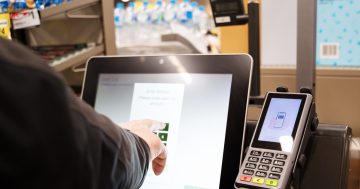Samuel Axon* says a new report claims that despite optimistic predictions, only a small percentage of Alexa users are shopping through the virtual assistant.
 Analysts have been aggressively optimistic in their predictions about the growth of consumer shopping via virtual assistants like Amazon’s Alexa, but a new report claims that only a small fraction of Alexa device owners shop using voice commands.
Analysts have been aggressively optimistic in their predictions about the growth of consumer shopping via virtual assistants like Amazon’s Alexa, but a new report claims that only a small fraction of Alexa device owners shop using voice commands.
And most of those who do only try it once or stick to a limited range of products.
However, an Amazon spokesperson has told Ars Technica “we do not agree with the numbers represented in the article.”
Two people who have been briefed on Amazon’s “internal figures” told tech business publication The Information that only around 2 per cent of people who own Alexa-equipped devices like those in Amazon’s Echo line have ever made a purchase with Alexa.
Of that 2 per cent, about 90 per cent tried it once and did not attempt it again after that, one of The Information’s sources said.
And even those users who regularly use Alexa to shop mainly do so for small purchases like household supplies.
Marketers and salespeople refer to these types of purchases as “minor new purchase decisions” or “minor repurchase decisions.”
The former refers to purchases like apps in an app store, games in Steam sales, or sweets in the supermarket checkout line — due to low costs, the stakes for these purchases are low, so consumers buy on impulse when exposed to the product.
The latter refers to products like toothpaste — low-cost products that consumers purchase again and again, usually simply out of familiarity with the brand.
Purchasing these things from Alexa makes sense because you can simply say, “order some new paper towels,” and you don’t have to think too much about what you’re going to get.
Amazon identifies some products as “Amazon’s Choice” products, and these are what Alexa is most likely to purchase for you in these cases.
(Amazon is not completely transparent about how it identifies which products are categorised this way, but we do know that return rate, user rating, and price are factors.)
But imagine that you’re buying a laptop or a TV — products that would not be categorised as minor decisions.
You’ll likely want to look at spec sheets, compare different products in the category, and even read detailed reviews to inform your purchasing decision.
In these cases, it doesn’t make much sense to order using Alexa.
The small numbers today don’t necessarily preclude growth for this behaviour in the future, though.
Amazon has tried to incentivise using Alexa to shop by offering special discounts on purchases made that way, both year-round and during Prime Day promotions.
Some third-party analysis from market research firms has estimated higher usage than what these sources claim Amazon’s own numbers say.
And Alexa-equipped devices continue to sell very well.
An Amazon spokesperson provided Ars the following comment on the report: “We do not agree with the numbers represented in the article.”
“Millions of customers use Alexa to shop because it is the most convenient way to capture needs in the moment.”
“It’s as simple as saying, ‘Alexa, order dish detergent’ while you are doing the dishes or ‘Alexa, order copier paper’ as you reach for the last one.”
“We want to enable customers to shop in whatever way is easiest for them.”
* Samuel Axon is the Senior Reviews Editor at Ars Technica. He tweets at @SamuelAxon.
This article first appeared at arstechnica.com.




